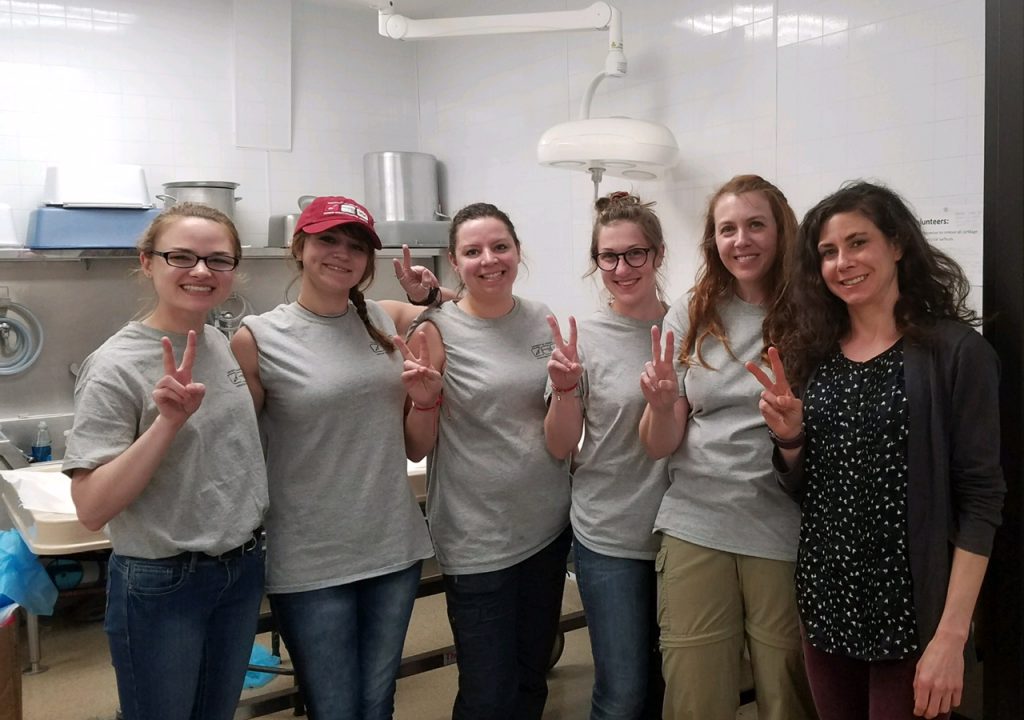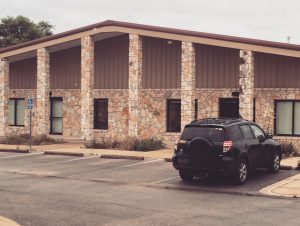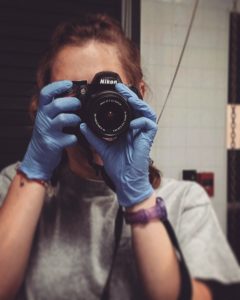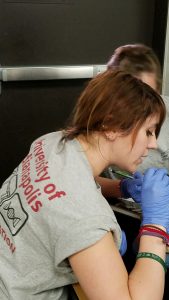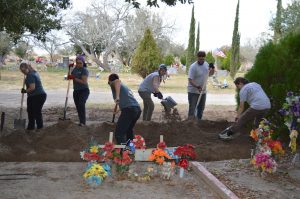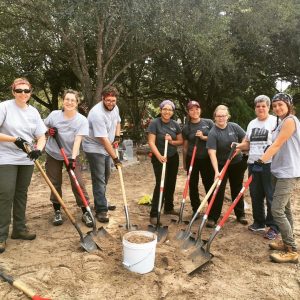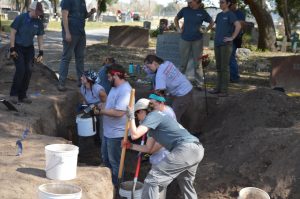Today was our second full day at the Osteology Research and Processing Laboratory (ORPL) conducting skeletal analyses. Our first four cases were individuals the UIndy team exhumed from Sacred Heart Burial Park when we were there doing exhumations in January. It is especially motivating for us to be able to follow these individuals from the exhumation to the analysis phase of the forensic investigation. Once the skeletal analysis is complete a forensic anthropology report is composed to outline the decedent’s living characteristics, such as an estimation of their age at death, how tall they were in life and a determination of whether they were male or female (among other things). Once the forensic anthropology report is complete, a sample can be submitted for the generation of a DNA profile. The DNA information is then compared to DNA profiles in a database that were submitted by family members of missing persons. If there is a profile that is similar, the information about the missing person is then compared to the information in the forensic anthropology report as well as other documents that might have important information about the unidentified person, such as when and where the body was found. If there are no major inconsistencies between all the various pieces of data, then a personal identification can be made. It is not an easy or a fast process. But the sooner the skeletal analysis occurs, the sooner they will enter this process and hopefully be identified and returned to their loved ones.
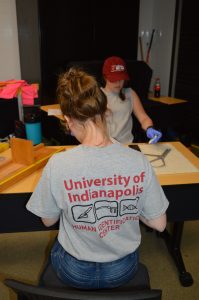
Today the UIndy team hit their groove. There was no stumbling over the various steps in the process or waiting on others to complete steps before others could be conducted. While two people were taking measurements, two others were analyzing non-metric traits and one was taking photos. It was a pleasure as a teacher to watch them find their confidence, work well as a team and help each other along the way. While our team was working on cases, there was a team from Texas State lead by Dr. Tim Gocha that was working on cases as well. The goal is to get as many of the 20 cases that are processed and ready for analysis completed by the two teams in three days. Also at ORPL this week is UIndy alum Caitlin (posing with us in our Day 2 photo). It’s great to see how well she’s doing since graduating from the UIndy Human Biology Program. Tomorrow is our last day of skeletal analyses. We plan to get there early and hit the ground running so that our last day is the most productive day yet.
~KEL
